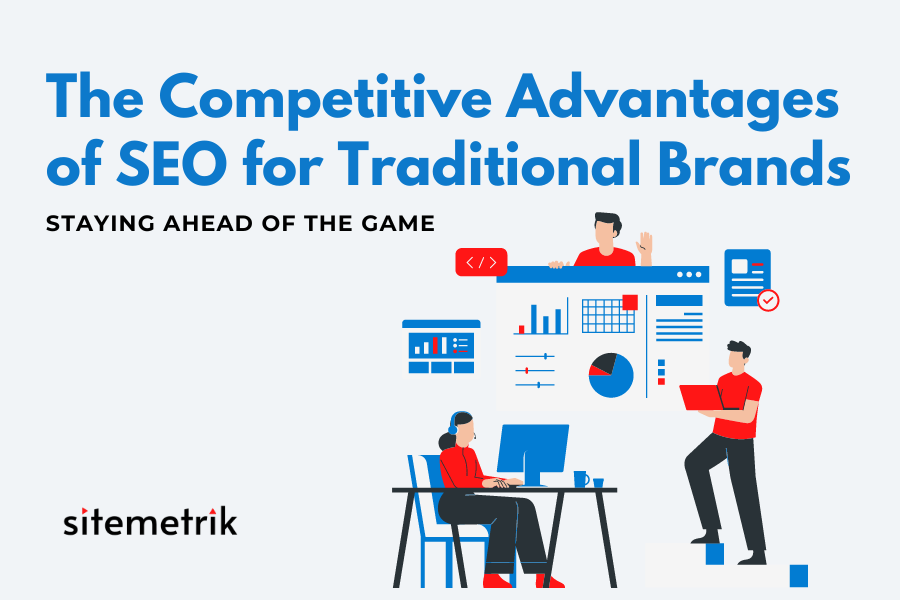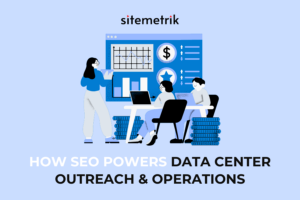The Competitive Advantages of SEO for Traditional Brands: Staying Ahead of the Game
What is SEO?
Search Engine Optimization (SEO) is the process of optimizing a website or online content to improve its visibility and ranking in search engine results pages (SERPs). In today’s digital age, having a strong online presence is crucial for traditional brands looking to stand out and connect with their target audience. SEO helps businesses to increase organic traffic from search engines, improve user experience on their website, and ultimately achieve higher conversion rates.
SEO advantages for traditional brands are paramount in the digital landscape. By optimizing their online content, businesses can bolster their visibility, enhance user experience, and ultimately outshine competitors, ensuring lasting connections with their audience.
Why is SEO Important for Traditional Brands?
SEO (Search Engine Optimization) is crucial for traditional brands as it offers numerous advantages that help them stay competitive in the digital age.
- Firstly, SEO improves online visibility by ensuring that websites rank higher in search engine results. This increased visibility allows traditional brands to reach more potential customers and expand their online presence.
- Moreover, SEO helps traditional brands understand their target audience better. By conducting keyword research and optimizing their websites accordingly, brands gain valuable insights into the search habits and preferences of their customers. This knowledge allows them to create content that resonates with their target audience, resulting in higher organic traffic and a better user experience.
- Furthermore, SEO drives more qualified traffic to traditional brand websites, increasing the chances of conversion. By optimizing their websites for relevant keywords, brands attract users who are actively searching for their products or services. This leads to higher conversion rates and a better return on investment (ROI) for their marketing efforts.
Benefits of SEO for Traditional Brands
Search engine optimization (SEO) provides numerous advantages for traditional brands. Firstly, SEO helps in increasing online visibility, allowing brands to establish a strong presence on search engines. Additionally, SEO efforts contribute to long-term marketing strategies by generating consistent organic traffic.
Moreover, SEO enables brands to understand their target audience better through keyword research and analysis. This valuable insight into customer search habits and preferences helps brands create tailored content that resonates with their audience, resulting in improved user experience, higher organic traffic, and ultimately, increased conversions.
Increased Traffic to Your Website
Having a strong online presence is essential for conventional firms to remain competitive in the digital age. Search engine optimization is a useful strategy for growing your website’s audience and increasing website traffic (SEO). You may raise your website’s organic search ranks and draw in more visitors by making it more search engine friendly.
In search engine results pages, you may make sure that your website is seen by focusing your SEO efforts on relevant keywords. As a result, your website will receive more natural traffic and you will become more visible to your target demographic. You can also draw in a highly targeted audience by focusing on long-tail keywords, which are longer and more focused phrases. Conversion rates will rise because these users are more likely to become clients.
The benefits of SEO extend beyond just traffic and conversions. Through content marketing and promotion, SEO can also help you generate more referral traffic. By creating informative and engaging content related to your industry, you can attract visitors to your site who are interested in the valuable information you have to offer. This not only increases traffic but also helps to establish your brand as an authority in your field.
Improved User Experience
Improving user experience (UX) is a critical aspect of search engine optimization (SEO) for traditional brands. In the digital landscape, where competition for online visibility is fierce, providing a seamless and engaging UX can set your brand apart.
Optimizing website navigation is essential to ensuring a positive user experience. By creating clear and intuitive navigation paths, users can easily find the information they are looking for. This not only improves user satisfaction but also helps search engines understand the structure of your website, making it easier to index and rank.
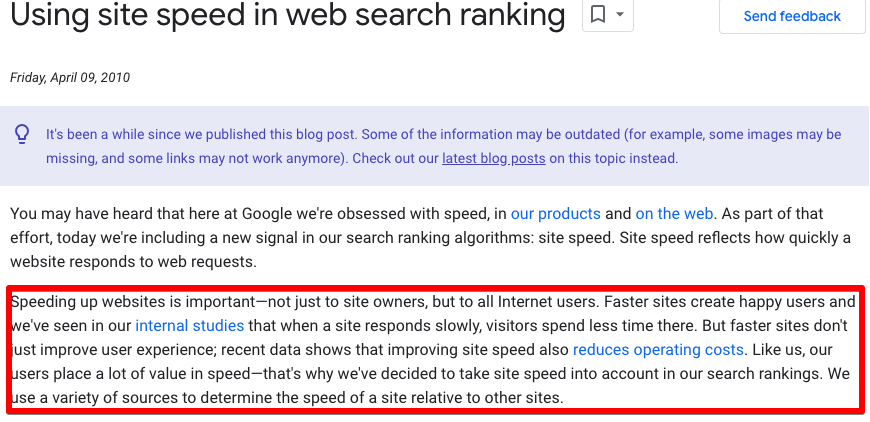
Image Source: Google Search Central
Another crucial factor in UX is page load time. Slow-loading pages frustrate users and increase bounce rates, negatively impacting your SEO efforts. Optimizing page load times through techniques like image compression and minimizing code can enhance UX and encourage visitors to stay on your site longer.
Meta titles and descriptions play a vital role in attracting users to click on your website in search engine results pages. By optimizing these elements with relevant keywords and compelling copy, you can improve click-through rates and drive more qualified traffic to your site.
Overall website usability is also critical for UX. In a comprehensive SEO strategy, efforts should be made to eliminate broken links and fix any usability issues. This ensures that users can easily navigate between pages, reducing frustration and improving engagement.
Increased Conversion Rates
The capacity of SEO to raise conversion rates is one of the main benefits it offers traditional brands. Search engine-friendly content and your website can draw in relevant visitors who are already considering your good or service. Due to their active search for solutions linked to your products, this focused group has a higher chance of becoming a customer.
When someone searches for a specific keyword or phrase related to your industry, and your website appears at the top of the search results, it signals to the user that your brand is reputable and trustworthy. This creates a sense of credibility, which significantly increases the likelihood of making a sale.
A strong SEO strategy also provides a competitive advantage over brands that do not invest in SEO. With the right optimization techniques, your website can outperform competitors in search engine rankings, driving more organic traffic and potential customers to your site. This not only increases your brand visibility but also positions you as a go-to resource in your industry.
Better Return on Investment (ROI)
One of the biggest advantages of SEO for traditional brands is its ability to deliver a better return on investment (ROI). By optimizing your website and content to be more user-friendly and search engine-friendly, SEO helps drive more qualified traffic to your website over time.
While it may take several months to see significant results from your SEO efforts, the long-term benefits are worth it. Improved search engine visibility and increased organic traffic lead to higher conversion rates, increased leads, sales, and revenue.
Traditional brands can more successfully draw in their target audience by focusing on particular keywords and improving the content of their websites. Because of this, there is a greater likelihood of conversions and purchases from the highly qualified visitors that SEO efforts generate. This focused strategy guarantees that the money spent on SEO produces quantifiable and noticeable outcomes.
Furthermore, in comparison to other marketing strategies, SEO is a cost-effective digital marketing tactic. It reduces marketing expenses for established brands while assisting them in reaching new consumers. Traditional brands can further improve their exposure and brand reputation by gradually building a strong online presence through consistent SEO investment.
More Relevant Keywords and Search Terms Used by Customers
Understanding and utilizing more relevant keywords and search terms used by customers is essential for the success of SEO efforts for traditional brands. By identifying and targeting the keywords and search terms that are most relevant to their products or services, traditional brands can increase their online visibility and drive highly targeted traffic to their website.
Relevant keywords and search terms play a significant role in determining a website’s ranking on search engines. When customers search for products or services using specific keywords, search engines match those keywords with the content on websites. By incorporating these relevant keywords into their website’s content, traditional brands can increase their chances of appearing in search engine results and attracting the right audience.
The process of identifying the most effective SEO keywords involves conducting thorough keyword research and analysis. This involves analyzing popular search terms related to the brand’s industry, products, and services. By understanding the search terms that potential customers are using, traditional brands can create content that aligns with their needs and interests, making it more likely to appear in relevant search results.
Understanding Your Target Audience and Potential Customers
Understanding your target market and prospective clients is essential for success when it comes to SEO. You can modify your SEO approach to more successfully reach and interact with your target audience by looking at their demographics, interests, and behavior. This entails figuring out the search phrases and keywords customers use to locate goods or services that are comparable to yours.
Identifying Your Target Audience
Understanding your target audience is a crucial step in any marketing strategy. By conducting thorough market research, you can gain valuable insights into customer behavior, preferences, and needs. This information allows you to tailor your marketing efforts and optimize your message to resonate with your target audience.
Market research involves analyzing demographic and psychographic data to create a comprehensive picture of your ideal customer. Demographics include age, gender, location, and income level, while psychographics encompass interests, values, lifestyle choices, and attitudes.
You may more effectively match the tastes of your target audience with your marketing efforts by knowing their psychographics and demographics. For instance, you can produce content that emphasizes the sustainability feature of your offering if your research indicates that young professionals are your target audience’s main interest in eco-friendly products.
Moreover, market research enables you to analyze customer behavior, including purchasing habits and decision-making processes. This knowledge can guide your marketing strategy by helping you identify the most effective channels and messages to reach your target audience.
Analyzing Potential Customer Habits and Trends
Any company trying to optimize their marketing plan must analyze the habits and patterns of potential customers, and SEO analytics and website statistics are vital tools for this process. Businesses can obtain important information into the locations, device preferences, and demographics of their target audience by employing these techniques.
- Firstly, SEO analytics provides data on the types of keywords and phrases that potential customers are searching for. By understanding what information they are seeking, businesses can create relevant and highly targeted content to address their needs and preferences. This helps in positioning the brand as a valuable resource and attracting organic traffic from potential customers.
- Additionally, website data including demographic information can further enhance the understanding of the target audience. Businesses can analyze the age, gender, location, and device preferences of their website visitors to tailor their marketing efforts specifically to these segments. For example, if data shows that a large percentage of website visitors are using mobile devices, optimizing the website for mobile compatibility becomes crucial to provide a seamless user experience.
- Moreover, by analyzing potential customer habits and trends, businesses can identify emerging patterns and preferences. This information helps in adjusting marketing strategies to align with these trends and stay competitive in the market.
Researching Relevant Keywords and Search Terms Used by Your Target Audience
Researching relevant keywords and search terms used by your target audience is crucial for the success of your SEO efforts. By understanding the specific words and phrases that your potential customers are using to search for information, products, or services, you can optimize your content to align with their needs and preferences.

Image Source: SEMrush
Keyword analysis and research allow you to identify the most relevant and popular search terms related to your industry or niche. This knowledge enables you to create content that addresses these search terms and increases the chances of your website appearing in search engine results pages (SERPs). Incorporating these keywords strategically throughout your website and content helps search engines understand the relevance of your site and improves your chances of ranking higher in organic search results.
Utilizing Google Analytics to Measure Performance Metrics
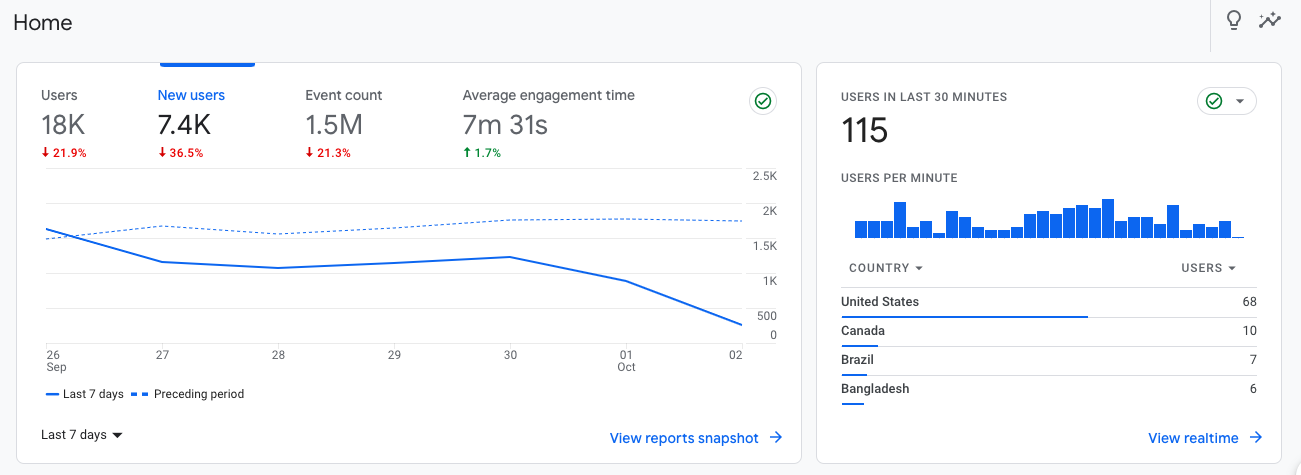
Image Source: Google Analytics
When it comes to optimizing your website for search engine optimization (SEO), one of the most valuable tools at your disposal is Google Analytics. This powerful platform allows you to measure a wide range of performance metrics that provide insights into the success of your SEO efforts.
- First and foremost, Google Analytics gives you a comprehensive view of your website’s overall performance. You can monitor key metrics such as website traffic, bounce rate, and average session duration to assess how well your site is engaging users. This data helps you identify areas of improvement and make informed decisions to enhance user experience.
- Another essential aspect that Google Analytics measures is conversions. By setting up conversion tracking, you can track and analyze the success of specific goals or actions on your site. Whether it’s newsletter sign-ups, product purchases, or contact form submissions, understanding which actions are driving conversions allows you to optimize your content and SEO strategies accordingly.
- Furthermore, Google Analytics provides valuable information about the value of keywords. By analyzing keyword performance data, you can identify the keywords that are driving the most organic traffic and conversions. This insight helps you refine your keyword strategy and focus on optimizing for high-value keywords.
Improving Your Content Strategy to Match Your Audience’s Interests and Needs
To effectively reach your target audience, it is crucial for traditional brands to align their content strategy with the interests and needs of their potential customers. By providing valuable content that answers questions and offers a good user experience, brands can establish themselves as a trusted source of information. Here are some steps to improve your content strategy:
- Research your target audience: Understand their demographics, interests, pain points, and preferences. This will help you create content that resonates with them.
- Identify relevant topics: Conduct keyword research to find out what topics your audience is searching for. Focus on creating content that addresses these topics in a comprehensive and valuable manner.
- Provide valuable information: Your content should go beyond promotional messages. Offer solutions, insights, and practical advice that addresses the needs and interests of your audience. This will establish credibility and build trust.
- Optimize user experience: Ensure your content is easy to read, visually appealing, and accessible on all devices. Optimize load times to enhance user experience and encourage engagement.
- Integrate a comment section: Encourage audience engagement by allowing comments on your blog posts or articles. Respond to comments promptly and engage in meaningful conversations to build a strong relationship with your audience.
By aligning your content strategy with the interests and needs of your target audience, you can provide valuable content, improve user experience, and foster audience engagement. This approach will ultimately strengthen your brand’s online presence and drive better results for your traditional marketing efforts.
Developing a Comprehensive Digital Marketing Strategy that Incorporates SEO Efforts
Developing a comprehensive digital marketing strategy that incorporates SEO efforts is of utmost importance in today’s competitive business landscape. SEO, or search engine optimization, is a powerful tool in marketers’ arsenals, offering high ROI and efficient content reuse.
By implementing SEO techniques, brands can increase their online visibility, drive organic traffic, and attract highly relevant audiences to their websites. This not only improves the brand’s online presence but also leads to an increase in qualified leads and potential customers.
One of the key advantages of SEO is its ability to deliver a high return on investment. Unlike paid advertising, where costs can quickly add up, SEO provides long-term organic visibility that can continue to benefit a brand even after the initial investment. Additionally, SEO allows marketers to reuse and repurpose content across various digital channels, maximizing its value and further stretching their marketing budget.
In addition, SEO helps traditional brands establish trust and credibility as users tend to perceive organic search results as more relevant compared to paid ads.
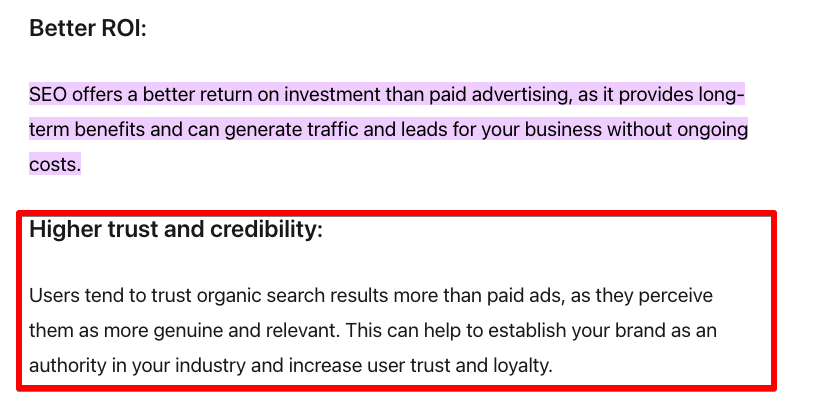
Image Source: LinkedIn
However, it is important to note that SEO also has its limitations. It takes time and effort to see significant results, as search engines constantly update their algorithms. SEO efforts require continuous monitoring, optimization, and adjustments to stay ahead of the competition. Moreover, SEO is just one aspect of a comprehensive digital marketing strategy and should be used in conjunction with other marketing channels for maximum impact.
Incorporating SEO into a marketing strategy can vary based on the type of company. E-commerce businesses can benefit from optimizing product pages and implementing keyword-rich content strategies, while service-based companies can focus on local SEO and building an authoritative presence through content creation and link-building activities.
Contact Top SEO Agency Today
Contacting a top SEO agency can provide numerous advantages for traditional brands looking to enhance their online visibility, drive organic traffic, and improve overall digital marketing strategies. These agencies have the expertise to analyze audience habits, research relevant keywords, and utilize tools like Google Analytics to measure performance metrics.
Traditional brands can gain from the in-depth expertise and experience of top SEO agencies in search engine optimization by working with them. Because of their knowledge, they are able to develop tactics that boost online visibility by drawing in highly focused organic visitors.

Baris Coskun
Baris Coskun is 8 years experienced SEO Expert that specializes in content and technical SEO strategy creation/implementation progress for large-scale, multilingual, and international targeting websites.

